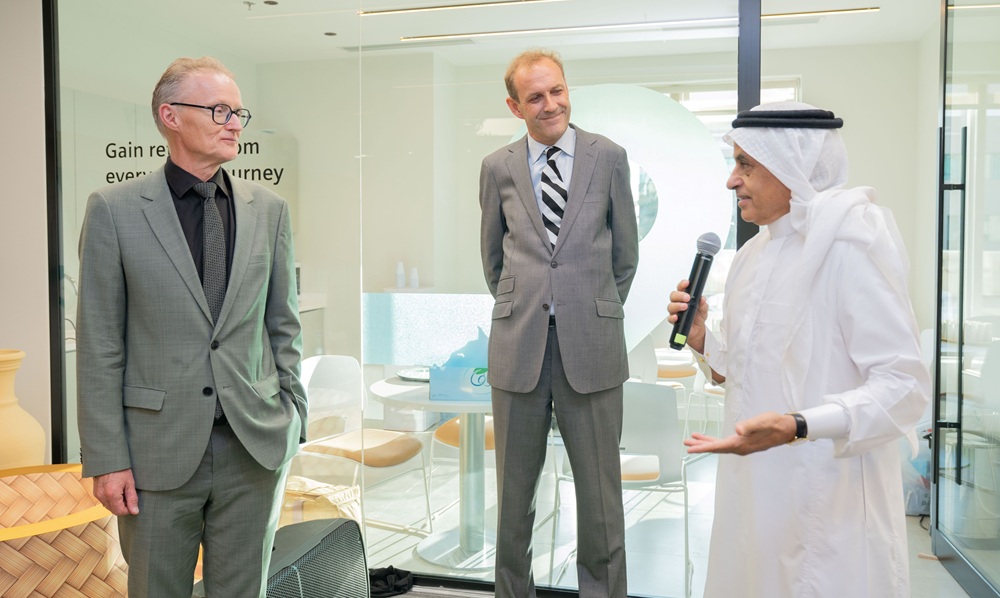Siemens Mobility has strengthened its long-term commitment to Saudi Arabia and the wider Middle East with the opening of a new office in Riyadh, marking a major step forward in its mission to shape the future of smart and sustainable transport across the region.
The expansion aligns closely with Saudi Vision 2030 and the Saudi Green Initiative (SGI) — national programmes designed to accelerate economic diversification and environmental sustainability. Through its enhanced presence, Siemens Mobility aims to support the Kingdom’s ambitions to build a more resilient, efficient, and climate-friendly transportation system.
“At Siemens Mobility, we are building on years of transformative contributions globally and since our first contract in 2005 in Saudi Arabia to make mobility in the Kingdom faster, safer, and more efficient,” said Frank Hagemeier, CEO of Siemens Mobility for Saudi Arabia. “The opening of our new office in Riyadh will bring us closer to our customers and strategic partners, enabling us to fast-track growth and reaffirm our position as a crucial player in the region’s mobility landscape.”
Strengthening roots in the Kingdom
The inauguration ceremony was attended by Saudi government officials, senior executives from key partners and clients, and representatives from the Embassy of the Federal Republic of Germany in Riyadh, including Ambassador H.E. Michael Kindsgrab, Julia Nordmann, Head of Economic Affairs, and Ali Dulaim, CEO of E.A. Juffali & Brothers Co.
The new office follows Hagemeier’s appointment as CEO in 2024, part of a broader regional expansion strategy that focuses on in-country value creation, job generation, and the development of homegrown engineering and technical expertise.
Delivering transformative transport projects
Since entering the Saudi market, Siemens Mobility has become a cornerstone of the Kingdom’s rail and metro development, delivering several landmark projects that define the modern mobility landscape:
-
East-West Rail Line: Implemented the first European Train Control System (ETCS) in the GCC, connecting Riyadh and Dammam with an advanced signalling network for passenger and freight transport.
-
Haramain High-Speed Railway (HHR): Provided high-speed rail technology connecting the holy cities of Mecca and Medina, pioneering the adoption of advanced rail infrastructure in the region.
-
Al Mashaaer Al Mugaddassah Metro Line: Played a vital role in electrification and system services for the line that transports millions of pilgrims between the holy sites in Mecca.
-
Riyadh Metro: As part of the BACS consortium, Siemens Mobility delivered the Red and Blue Lines, supplying 67 Inspiro trains and state-of-the-art Communications-Based Train Control (CBTC) technology. Operational since December 2024, the system reached the milestone of 100 million passengers in August 2025 and continues to be maintained by Siemens under a long-term service contract.
Beyond its engineering achievements, Siemens Mobility is investing in local talent development through partnerships such as the collaboration with the Saudi Railway Polytechnic (SRP). Together, they run a dual education programme that blends classroom instruction with practical training in rail signalling, electrification, and communications systems. The initiative equips Saudi students with the skills to maintain and expand the nation’s growing digital rail infrastructure.
Accelerating the region’s mobility transformation
The new Riyadh office marks a pivotal moment for Siemens Mobility as it accelerates its role in the Middle East’s transition to integrated, low-emission, and digitally connected transportation systems. By combining global expertise with local collaboration, Siemens aims to drive sustainable growth across rail and urban mobility sectors while contributing to the Kingdom’s broader industrial development goals.
“This is not just an expansion of our physical footprint,” Hagemeier added. “It is a reaffirmation of our long-standing partnership with Saudi Arabia — one that will empower the next generation of talent, technology, and transport.”



